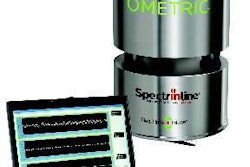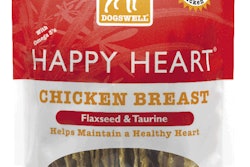.png?auto=format%2Ccompress&q=70&w=400)
Are private label petfoods getting back on track? After softening between 2003 and 2006, sales of these products resurged in 2007, reaching 11% of overall global market shares, according to Euromonitor International. (End of 2007 are the latest data available.)
Though private label's growth was smallup from 10.6% at the end of 2006-that compares favorably to three of the five top global petfood companies that lost value share from 2006 to 2007 (Figure 1).
Euromonitor attributes the private label growth to three key factors:
- Prevalence of these products in Western Europe, North America and Australasia.
- Robust growth in developing regions, especially Eastern Europe.
- A surge in the pet specialty retail channel, particular pet superstores, which are creating their own premium private label petfoods.
Regional strength
Western Europe is king of private label products, which held a 13.6% share of that region's pet market-double that of one of the leading brands, Whiskas from Mars, at 6.1%. That private label share (including all pet products, not just petfoods) translated into sales of US$3.05 billion (Figure 2).
In North America, private label products comprised 8.9% of the pet market, with US$2.19 billion in sales. Private label also captured a healthy market share in other regions but at much lower sales totals because of those markets' relatively smaller size. For example, Middle East/Africa's 8.7% private label share amounted to only US$41.2 million.
Two types of success
Though private label sales in Middle East/Africa may not be large yet, that region is one of the fastest growing for these pet products (Figure 2). But no region is enjoying as sharp a growth rate for private label as Eastern Europe. According to Euromonitor, private label's share of all pet products in this region rose by two full percentage points between 2002 and 2007.
The reasons behind this growth in Eastern Europe are very different from what's underpinning the strength in developed regions. In Western Europe and North America, supermarket and "hypermarket" chains-which control 35% of pet retail-have created their own private label premium petfoods. So have pet superstore chains such as Petco and PetSmart in the US.
Eastern European pet owners tend to be price sensitive and have very low brand loyalty, Euromonitor says. This creates an opportunity for value-priced private label petfoods. Many domestic petfood manufacturers are smaller companies without the resources to invest in advertising to raise brand awareness, so they see manufacturing private label products for major retailers as a way to gain market share and grow profitably.
Huge retail impact
The pet retail sector has a huge impact on the private label petfood market. While supermarkets and hypermarkets may still have the largest share in pet retail, Euromonitor says pet specialty shops and superstores have increased their share almost three percentage points in the last five yearsfrom 21.2% in 2003 to 24.2% in 2008.
Much of that growth has come from aggressive expansion by the Germany-based Fressnapf chain, which included 919 pet superstores throughout Western Europe as of June 2008. That total represents a nearly 40% increase since just 2006. The 10,000 items in a typical Fressnapf store include its premium private label dog and cat food brands.
What lies ahead
Despite the current global economic woes, most experts predict pet ownership will continue to increase, especially in developing regions, as incomes rise and owners seek better, healthier food for their pets. Trends driving petfood growth in developed regions-humanization, premiumization, health and wellness-will become more of a factor around the world.
In that environment, Euromonitor predicts private label manufacturers will increasingly target the premium segment. Pet superstores will continue to play a key role, using their brand equity to drive private label sales.



.png?auto=format%2Ccompress&fit=crop&h=167&q=70&w=250)














